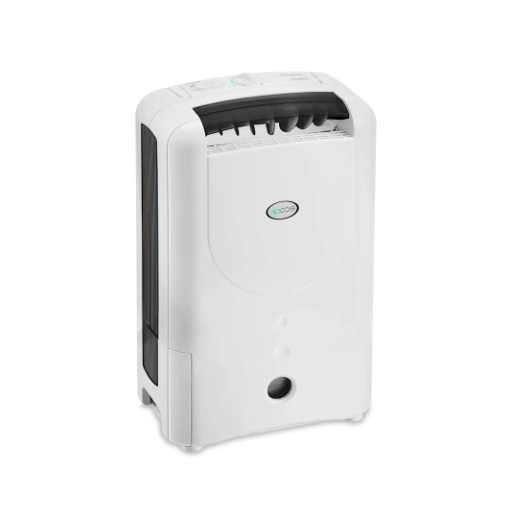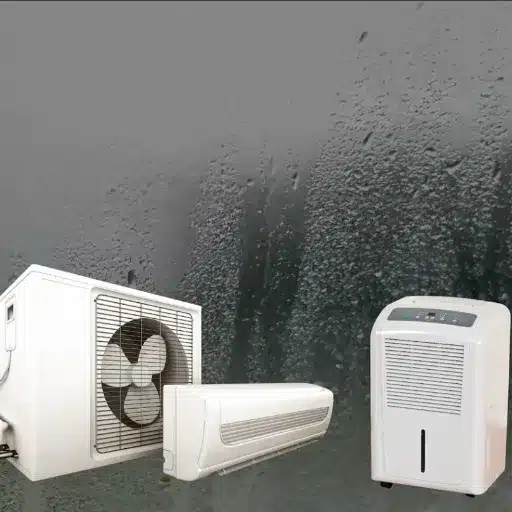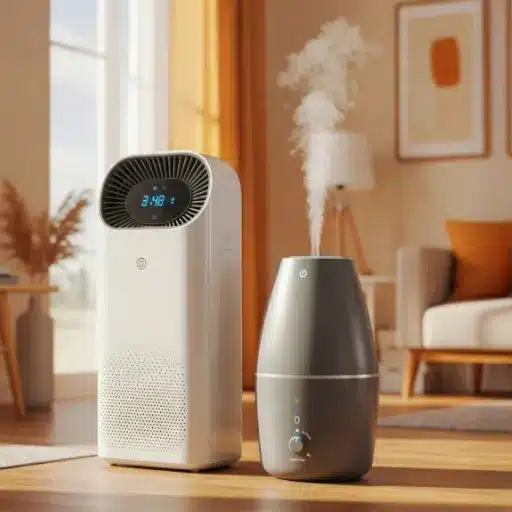When it comes to managing humidity levels in your home, particularly in areas like the basement, dehumidifiers often prove to be an essential appliance. However, questions about their safety—especially when left running unattended—frequently arise. Basements are prone to excess moisture, which can lead to mold growth, structural damage, and poor air quality if not properly addressed. But is it truly safe to leave a dehumidifier operating on its own for extended periods, or are there risks you should be aware of? This article dives into the technical and practical considerations of dehumidifier operation, safety precautions, and best practices to ensure your appliance functions efficiently while giving you peace of mind.
Understanding Dehumidifiers
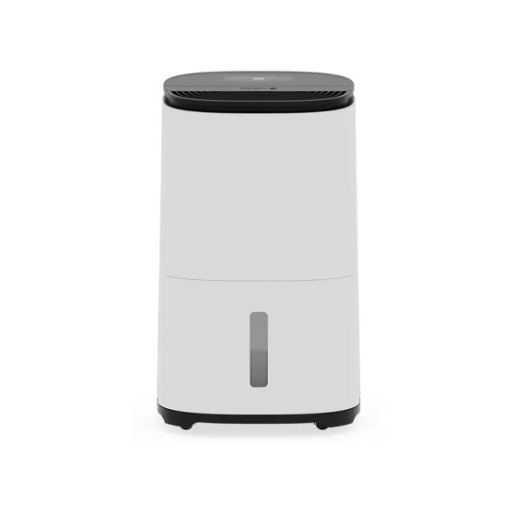
What is a Dehumidifier?
A dehumidifier is an appliance that removes moisture from the air within the home to keep humidity levels at the optimal range. Excessive humidity facilitates mold growth, creates an unpleasant smell in the house, and creates an uncomfortably evenly temperature. By extracting water vapor, the early dehumidifier allows air to be of better quality, making living conditions more pleasant.
Dehumidifiers take humid air from an indoor source, lower its temperature, thereby condensing all water content from its air, and collect the water either in a container or let it run out through an external hose. The air is then reheated and returned to the room at a lower humidity level suitable for human comfort. In essence, this cycle goes on, dropping humidity, equally comfortable and healthier for the inhabitants.
Contemporary versions feature variable humidity controls, automatic shutoff, and energy-saving modes. Dehumidifiers find uses in almost any moisture-prone area, including basements, bathrooms, and kitchens. From that point forward, from their base to their moisture absorption capability, they should be selected to fit the dimensions of the room and are ideally suited to the exact requirements of the user.
How Does a Dehumidifier Work?
In essence, dehumidifiers can extract moisture from the air, lowering the humidity level in an indoor environment. From there, a dehumidifier will draw air from the vicinity by means of a fan. The air is passed over the cold coils, where the moisture in it condenses into water droplets due to the cooling. The water then drops in a reservoir or drains out through a drain hose, depending on the configuration of the dehumidifier.
On their way back into the room, the air is first warmed to achieve a comfortable temperature. This method keeps the air comfortable and prevents chilling, thereby creating a balanced and controlled indoor environment. Time-saving and convenient, many of today’s dehumidifiers come equipped with sensors to measure moisture as it is being dried, allowing the device to turn itself on and off to maintain the required humidity level.
Dehumidifiers work more or less efficiently, depending on the capacity of the device, the size of the room, and the current level of humidity. Larger spaces or wetter rooms may require stronger dehumidifiers. Also important for the effective operation and longevity of dehumidifiers is regular maintenance: cleaning or replacing filters and emptying the water reservoir. By reducing humidity effectively, one can improve air quality, curb mold formation, and work to provide a healthier living environment.
Benefits of Using a Dehumidifier
- Prevention of Mold and Mildew Growth: Excessive humidity is a great promoter of mold and mildew and can pose various health problems, including allergies and respiratory ailments from exposure thereto. Thus, a dehumidifier removes moisture from the air and minimizes the possibility of fungus growth. Research shows that an indoor humidity below 60% drastically reduces the chances of mold development.
- Improved Indoor Air Quality: Dust mites and airborne allergens can flourish in air with moisture. By keeping humidity within the recommended range of 30 to 50 percent, dehumidifiers eliminate a large portion of these pollutants, giving us cleaner air and a more comfortable environment to live in.
- Preserving the Structural Integrity of Your Home: High humidity, prolonged exposure will cause wooden structures to weaken, paints to blister, and wallpaper to peel. Hence, controlling moisture content by a dehumidifier will assure the long life of your home, free from big repair costs.
- Energy-Efficient and Gives Your HVAC a Longer Life: High moisture makes the air feel warmer, thus air conditioners work harder to maintain coolness in indoor temperatures. Dehumidifiers lessen the strain on HVAC systems; hence, they improve the efficiency of energy and reduce utility bills.
- Comfort and Eliminate Odor: More often than not, excess humidity gives a damp and sticky feeling that turns uncomfortable. It also breeds some nasty smells caused by mold and mildew. Dehumidifiers get rid of all that extra moisture, giving you a pleasant environment to drop your tired bones while they neutralize the musty odors.
By addressing these key factors, dehumidifiers offer great immediate and long-term benefits for a healthier and more efficient living space.
Safety Concerns of Running a Dehumidifier Unattended
Potential Fire Risks
Fire hazard presents one of the major risk factors in allowing dehumidifiers to operate without supervision. Faulty components such as wiring, capacitors, or overheated motors can potentially spark electrical failures able to start a fire. This probability is higher with older or poorly maintained dehumidifiers, in which the age and wear of the appliances play a significant role in the risk towards operational safety.
Another important consideration in the dehumidifier working environment is the use of the dehumidifier. If the dehumidifier finds itself set beside or near a combustible material such as curtains, upholstery, or any other household combustible item, it only increases the chances of fire if it heats up. If there is hardly enough free space around the dehumidifier for heat dissipation, dangerous levels of temperature will be reached by the dehumidifier itself, and this further increases the risk of ignition. Using the dehumidifier against its manual directions, such as plugging it into an extension cord rather than directly into a wall outlet itself, greatly adds to the fire risk when circuits are overloaded.
To avoid fire hazards, a few precautionary measures could be followed. Periodic upkeep, such as cleaning of filters, removal of dust collection on machine parts, and inspection of the power cord for cracks or any damage, can help substantially diminish the chances of fire. Most modern dehumidifiers are equipped with safety features like auto shutoff in case of overheating, but solely counting on these features is not suggested. Replacement of installed outdated units with UL-certified equipment is recommended to make sure they follow the stringent safety standards of today. In the end, proper maintenance, wise placement, and following safe operational practices reduce fire hazards and make the usage of dehumidifiers safe.
Energy Consumption and Costs
Energy consumption and cost, when calculating for a humidifier, depend upon the various power requirements that vary with different types of units. Among them, ultrasonic humidifiers are generally understood to be more energy-efficient, using somewhere between 20 and 50 watts, depending on size and settings. On the other hand, steam vaporizers, which heat water to create moisture, generally use much more power, usually between 200 and 500 watts.
This is a major factor affecting the long-term cost, together with maintenance. Highly efficient humidifiers with features like automatic humidity controls and energy-saving modes can possibly save electricity in the long run and offset the extra capital costs. According to recent industry information, a medium-sized ultrasonic humidifier running 8 hours per day will increase an energy bill by between $1 and $3 per month, whereas a bigger steam vaporizer can incur an additional cost of $5-$10 for energy consumption during the same timeframe.
Energy-wise, one should consider units that hold ENERGY STAR ratings, whenever applicable, because these units are made to meet stringent energy efficiency standards. Also important is guaranteeing that the humidifier is aptly sized for the room; a unit too powerful for a small area wastes energy unnecessarily, whereas a unit too weak in a large space ends up running continually in an inefficient mode.
Maintenance Issues to Consider
Maintenance of any type of humidifier has always been necessary to uphold excellent working conditions, prolong the longevity of the owner, and be better prepared for health risks. Regular cleaning is required since mineral deposits can form in the water conditioning tank and other areas, and microorganism growth can also occur. Generally, the manufacturer’s manual contains instructions labeling the desired cleaning frequency as one to two times per week, depending on the amount of use.
Distilled or demineralized water should, as a rule, be applied to prevent mineral scaling inside the machine, which would cause a clog and decrease efficiency. Also, if the humidifier contains a filter, it should be examined and replaced as specified by the manufacturer to continue good air quality and operational efficiency. If filters are not replaced when they should be, the opposite result occurs, whereby dust, allergens, and bacteria get circulated through the environment.
Using a hygrometer to monitor relative humidity levels in the space is also essential. Overhumidification is not only energy-wasting but also aids the growth of mold and causes damage to the structure. In the end, proper storage of the humidifier during prolonged non-use, such as emptying and drying all removable parts, will greatly help prevent contamination from any residual water.
Tips for Safe Operation
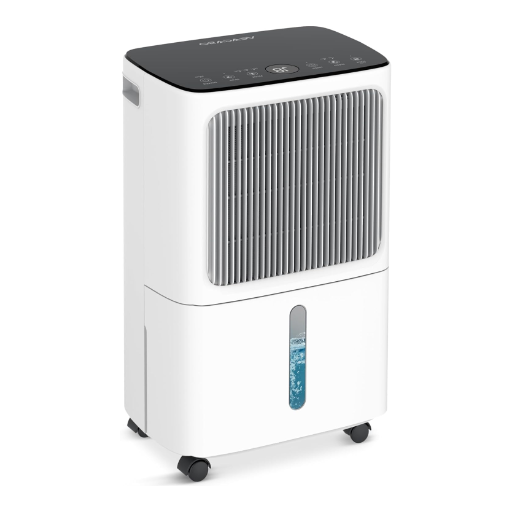
Using Timers and Humidity Sensors
I ensure that humidity devices work only in hours when needed for energy efficiency and inside air balance with timers. Setting the timers for specific time intervals according to my schedule avoids over-humidification, unnecessary energy consumption, and also ensures a longer life span for the humidifier. Hence, these timers come in handy, especially through the night or in any other situation when keeping ambient humidity steady is of paramount importance.
Humidity sensors are, however, indispensable for ensuring indoor air quality control with immense precision. I make use of the humidity sensors to monitor the relative humidity level in my awareness so as to keep it between the accepted range of 30% and 50%. These sensors, generally interfaced with advanced models of humidifiers or standalone devices, provide me with the freedom to regulate the output of the humidifier when necessary. By doing so, I have an option to circumvent too dry or too humid environments that would otherwise present health threats or might adversely affect property.
A great synergy between timers and humidity sensors provides an effortless yet thorough setup, duly undertaking the task of offering a comfortable and healthy environment while ensuring cost-effective and safe operation of the humidifier. FROM mold prevention and energy-saving scenarios, the integration has facilitated and finally dismissed every concern about the wrong use of the system. Hence, with these tools, I am set to confidently go ahead with proactive control over indoor climate management.
Proper Placement for Optimal Performance
A humidifier must be installed correctly to fulfill its purpose optimally and prevent any untoward consequences. To maintain the relative humidity in the room at the desired level, the humidifier needs to be situated toward the center of the space to allow moisture dispersion in an evenly distributed manner. One way to enhance the disruption of vapor emissions from the humidifier is by placing it on an elevation, such as a table or countertop, skipping over heavy furniture, or away from wall obstructions. Should it be kept on a carpet or hardwood floor, there might just be an accumulation of moisture on the floor, which, over time, may cause irreparable damage.
Even away from electric gizmos, the apparel should be considered. The humidifiers stay splitting the fine mist droplets; they might end up in condensed water if placed close to any electrical gadgets, thereby causing damage to these extremely sensitive pieces of equipment. Keeping a clearance of not less than 3–4 feet around the humidifier shall ensure a breeze flows freely and lessen unnecessary risk to objects in its surroundings. Another essential work to avoid is placing the unit near heat sources, such as radiators or warm air vents, because direct heat may defeat the working of the unit, either by prematurely evaporating the mist before it is able to disperse into the air.
Finally, regular monitoring of the surrounding environment carries similar importance, thereby supporting proper placement in fulfilling its target goals. One source of monitoring would be to assess whether any spaces are faced with ever-increasing dampness or dryness, which then guides the adjustment of the placement or proper use frequency. This is when an appropriate utility like a hygrometer will come in handy, providing real-time information on humidity that will give an evidence-based approach to the management of indoor climate. Consistent consideration toward placement is vital to ensure that the humidifier remains effective and is a part of every other design to nurture air quality and comfort in the working space.
Impact on Indoor Air Quality
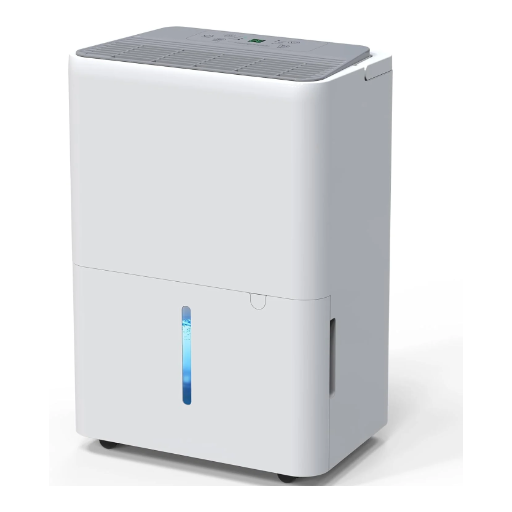
Reducing Humidity and Mold Growth
Controlling humidity levels in indoor spaces is crucial for air quality and mold prevention. If the relative humidity goes above 60 percent, it favors mold growth, causing structural damage and some health adversities such as respiratory issues and allergies at times. Besides, high relative humidity can also support dust mite infestation and thus compromise air quality. Thus, keeping indoor humidity between 30 and 50 percent constitutes one of the things needed for a healthy and balanced ambience.
The installation and proper usage of dehumidifiers are the main approaches to combating high humidity levels. These modern dehumidifiers with built-in hygrometers give accurate readings and automatically adjust to maintain the desired level with negligible manual intervention on the part of the user. Further drying strategies, for example, exhaust fans that drain moist air from these wet test areas, bathrooms, and kitchens, also effectively cut down on moisture. Preventing that moisture is good, ensuring the indoor environment is comfortable and healthy to live in.
For more stubborn wetting areas, sealing leaks and improving insulation will go a long way in reducing moisture entry. Such advanced materials as vapor barriers and moisture-resistant drywall can be exploited to fight external moisture from ingress. Finally, install air purification systems utilizing HEPA filters and ultraviolet light technology for removing airborne mold spores, thereby yielding cleaner and safer indoor conditions. Now, a credible evidence-based long-term approach to managing humidity in a residence and a commercial place can undoubtedly serve to improve air quality and give a death blow to the negative effects of mold.
Protecting Your Home from Moisture Damage
Keeping your house safe from moisture damage calls for integrated and advanced techniques. First, do an exhaustive inspection to locate weak spots like basements, crawl spaces, or attics-most prone to water intrusion. For these areas, heavier-duty vapor barriers made with polyethylene sheeting can be installed to restrict vapour ingress through the hard floors. Another important consideration is to check the gradation around your home foundation-it needs to slope away from the building so that water flows outward and does not collect near the structure.
In the modern era, technology enhances moisture control. Intelligent humidity monitors provide you with real-time data and alerts, so you can maintain the ideal (EPA-recommended) 30%-50% indoor humidity level. The dehumidifier will also keep moisture levels under control while consuming comparatively less power. This method is especially useful in places with a lot of humidity.
Use a high-grade sealant that offers long-term durability and resistance to environmental conditions to close any gaps or cracks that might exist in your walls, windows, or roofing. Place high-ventilation-capacity exhaust fans in places where moisture is always high so that it can be evacuated right at the source. Correct drainage will support moisture control by avoiding the accumulation of water near the foundation through downspouts and gutters through timely inspection and cleaning. Good upkeep of such systems is necessary.
Last but not least, research conducted by bodies such as the International Association of Certified Home Inspectors further confirms the waterproof coatings and concrete sealers as being effective in keeping seepages away from masonry surfaces. This approach, combined with a few preventive maintenance measures, will yield an impregnable outline against moisture-related structural and health concerns in inhabited zones.
Monitoring Relative Humidity Levels
Accurate monitoring of the RH levels is essential in having a healthy, durable, and efficient indoor environment. Relative humidity (RH) really just means the percentage of water vapor present in the air compared with the maximum amount at that particular temperature. Since these RHs tend to fluctuate, there are related problems that arise, such as structural deterioration caused by excessive moisture or health-related issues caused by dry air. In most instances, between 30 and 50% RH will do for residential and commercial establishments; a good balance that inhibits mold growth, keeps respiratory irritation at bay, and protects building materials over time.
Various technologies and tools can be accepted for used to track relative humidity with precision. Hygrometers are superb tools that are quite popular for giving out accurate readings on moisture levels in the air. Digital hygrometers today can even give you the option of connecting wirelessly so you can retrieve data, monitor it remotely, and possibly integrate it into a smart home system. The modern versions of these devices also give out alerts whenever deviations in the RH levels of preset parameters occur. To add another layer of confidence to the system, there could also be temperature-compensated sensors that are able to adjust their readings dynamically according to temperature conditions. Having such an exact monitoring mechanism proves invaluable in places where humidity control is necessary, like archives, hospitals, and manufacturing facilities.
The other worthy solution to maintain anything close to those conditions would be to integrate RH data into the building automation system (BAS). Connected through IoT, smart thermostats and humidity controllers can take full charge of operating HVAC systems automatically according to RH readings. For instance, the system can ramp up its humidification efforts during winter to combat dry air conditions or reverse the process by activating dehumidifiers in summer to suppress unwanted humidity. The availability of real-time data coupled with predictive analytical tools driven by machine learning algorithms actually guides the whole decision-making process while slashing energy expenses. The net end of these technological interventions guarantees a healthy indoor climate from the onset. Furthermore, they also nurture greater resilience and operational excellence.
Expert Advice on Dehumidifier Use
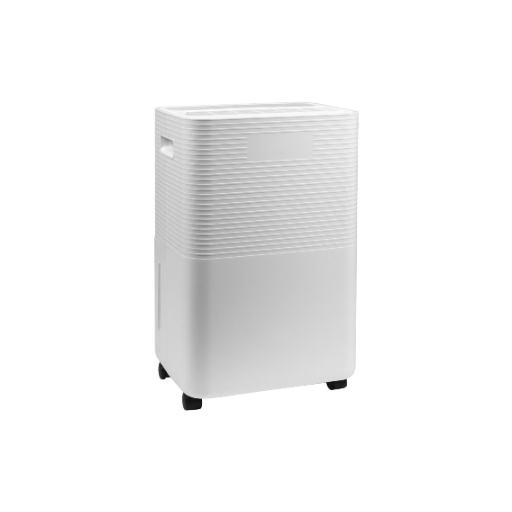
Insights from HVAC Specialists
HVAC experts stress that dehumidifiers must be perfectly selected, installed, and operated for the best performance and energy efficiency. The initiation of service would involve accurately inspecting moisture levels and the total floor area of the area where the dehumidifier is destined for use. More sophisticated units with humidity sensors and programmable controls can dynamically adjust to the instabilities of indoor conditions to remove the correct amounts of moisture rather than overworking the system.
Maintenance is another element that specialists advocate for the enhancement of efficiency over time. This would require cleaning the air filters regularly, checking the condensate drain system for any clogs, and inspecting cooling coils for dust and dirt accumulation. Otherwise, the very notion of system operation is compromised, leading to loss of capacity and energy efficiency, not to mention health hazards from mold proliferation.
Modern dehumidifiers, especially those incorporated into HVAC, are typically equipped with smart technologies, including IoT connectivity and energy-saving modes to offer load performance-based real-time monitoring with which users could then incorporate data to adjust their operations and reduce the accrual of operational expenses. Those even advise choosing the Energy Star as it is well-proven for its energy-saving features and sustains very high-standard performance ratings.
Following such methods, the homeowners and building supervisors can ensure that their dehumidifiers work for extending the life of the systems, as well as working toward achieving a sustainable indoor environment.
Common Misconceptions About Dehumidifiers
Contrary to popular belief, many misconceptions about the working and use of dehumidifiers still prevail. One such myth is that dehumidifiers are major energy guzzlers. It is true, to an extent, as the older models used to be more inefficient. However, most current dehumidifiers embody energy-efficient technologies, such as variable speed compressors and humidity sensors, to optimize dehumidifier performance while consuming minimum power. For example, Energy Star-type awards for dehumidifiers ensure they consume almost 30 percent less energy than their non-certified counterparts.
Another misconception that is quite common is the perception that a dehumidifier will solve all moisture-related issues in a building or home. It is true that dehumidifiers do help regulate the levels of indoor humidity to an acceptable range (usually between 30 and 50%), but they perform best when coupled with proper ventilation, insulation, and waterproofing processes. Ignoring structural factors such as leaks or insufficient airflow in your home can completely undermine the effectiveness of your dehumidifier.
Also, some people think that dehumidifiers will work well wherever they are fitted or placed. But placement matters to performance. Dehumidifiers need to be placed in areas where there is good air circulation, with entry into moisture-prone areas such as basements or laundry rooms, so that even moisture control can be carried out.
From these myths, and with the explanation of the newest technological advancement of modern dehumidifiers, one can see how homeowners and building managers should really make use of these machines to provide excellent efficiency, protect the infrastructure, and offer healthier indoor environments.
References
-
Controlling Moisture Problems in Your Home
This resource from the University of Minnesota Extension guides using dehumidifiers to manage moisture issues in homes. -
Air Filters, Dehumidifiers, and Humidifiers
Published by the University of Rochester Medical Center, this article offers insights into air-quality appliances, including dehumidifiers. -
Closing Your Seasonal Home – UF/IFAS EDIS
This publication from the University of Florida discusses the use of dehumidifiers in seasonal homes and their role in moisture control.
Frequently Asked Questions (FAQ)
Q: Is it safe to leave a dehumidifier on when not home?
A: Yes, it is generally safe to leave a dehumidifier running when you are not home, provided that the unit is in good working condition and you have taken necessary precautions. Ensuring that the tank is empty or properly drained can help prevent overflow, and placing the dehumidifier in a suitable location away from walls or furniture can enhance its effectiveness.
Q: How do I place the dehumidifier for optimal performance?
A: To achieve the best results, place the dehumidifier in a central location within the room, away from walls and furniture. This allows for better airflow and helps the appliance to manage moisture levels more efficiently, especially in areas prone to dampness, like basements or conservatories.
Q: Can I use a dehumidifier continuously?
A: Yes, you can keep a dehumidifier running continuously, especially in humid environments. Many modern models come equipped with a humidistat, which enables them to automatically switch on and off to maintain optimal relative humidity levels, making it safe and energy-efficient.
Q: Do I need to empty the tank if I leave the dehumidifier running?
A: If your dehumidifier uses a bucket to collect moisture, it will need to be emptied periodically. However, many models are designed for continuous drainage via a hose that connects to a sink or drain, allowing you to run the dehumidifier unattended without worrying about overflow.
Q: How can a dehumidifier help with drying clothes?
A: Using a dehumidifier while drying clothes can significantly reduce drying time by managing moisture in the air. This is especially effective in rooms where drying clothes may cause condensation, helping to maintain indoor air quality and prevent mold growth.
Q: What should I consider when using a dehumidifier in a basement?
A: When using a dehumidifier in a basement, ensure that the unit has enough capacity to handle the amount of moisture in the air. It’s important to monitor humidity levels; if the air is consistently humid, consider running the dehumidifier continuously to prevent mold and dampness.
Q: What are the risks of leaving a dehumidifier running unattended?
A: While it is usually safe to leave a dehumidifier running unattended, risks include potential overflow if the tank is not emptied, or failure of the appliance due to power issues. Regular maintenance and monitoring can help mitigate these risks, ensuring that the unit operates effectively.
Q: How does the temperature affect dehumidifier effectiveness?
A: A dehumidifier operates best in warmer temperatures, as warmer air holds more moisture. If the air has a lower temperature, the appliance may struggle to remove excess moisture, potentially leading to condensation on coils and reduced effectiveness.
Q: Can a dehumidifier help with mold prevention?
A: Yes, using a dehumidifier can help prevent mold growth by reducing excess moisture levels in the air. By maintaining optimal humidity levels, you can minimize dampness in your home, making it less conducive to mold and allergens.
Q: What is the ideal relative humidity level for running a dehumidifier?
A: The ideal relative humidity level for indoor spaces is generally between 30% and 50%. Keeping your dehumidifier running within this range helps manage moisture levels effectively, ensuring a comfortable and healthy living environment.

